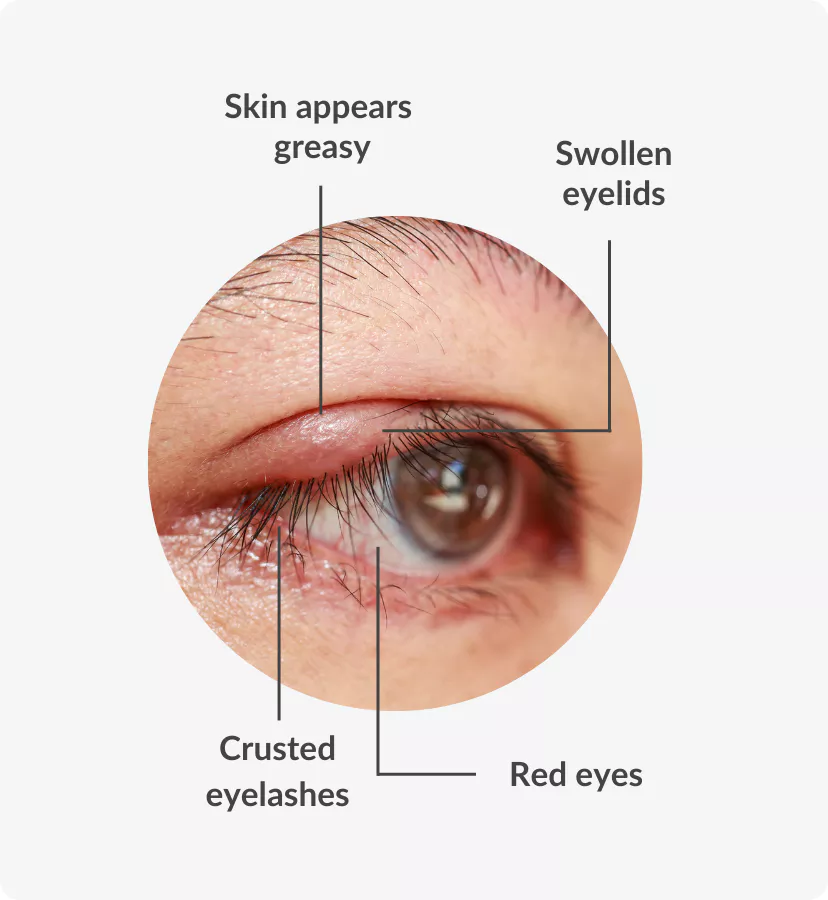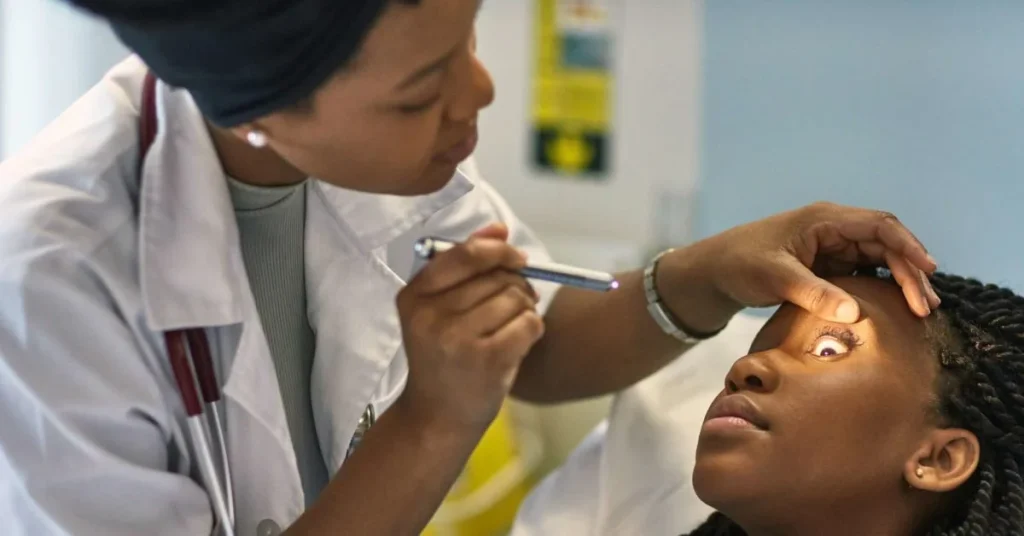
Blepharitis is a common eye condition that causes inflammation of the eyelids. It can be uncomfortable, but it’s usually manageable with proper care. Let’s break down what blepharitis is, its symptoms, causes, and how you can treat it.
What is Blepharitis?
Blepharitis occurs when the tiny oil glands near the base of the eyelashes become clogged. This leads to irritated and red eyelids. It’s a chronic condition, meaning it can come and go over time.
Symptoms of Blepharitis
Common symptoms of blepharitis include:
- Red, swollen eyelids
- Itchy eyelids
- A gritty or burning feeling in the eyes
- Flaking of the skin around the eyes
- Crusty eyelashes, especially upon waking
- Sensitivity to light
- Watery eyes
Causes of Blepharitis
Several factors can contribute to blepharitis, including:
- Bacterial infections: Commonly caused by Staphylococcus bacteria.
- Seborrheic dermatitis: A skin condition that causes flaky, itchy, and red skin.
- Rosacea: A skin condition that affects the face and can cause eye problems.
- Allergies: Reactions to eye drops, contact lens solutions, or cosmetics.
- Mites or lice: Tiny parasites that live in or near the hair follicles.
Treatment for Blepharitis
Managing blepharitis involves good eyelid hygiene and sometimes medication. Here are some steps to help control symptoms:
- Warm Compresses: Apply a warm, damp cloth to your eyelids for a few minutes. This helps loosen crusts and dilates the oil glands.
- Eyelid Scrubs: Gently scrub your eyelids using a clean cloth or cotton swab with diluted baby shampoo or a special eyelid cleanser. This helps remove debris and excess oils.
- Medications: In some cases, doctors may prescribe antibiotic ointments or drops to treat infections, or steroids to reduce inflammation.
- Artificial Tears: These can help relieve dryness and irritation.
- Manage Underlying Conditions: Addressing issues like rosacea or seborrheic dermatitis can help reduce blepharitis flare-ups.
When to See a Doctor
While home care is often effective, see a doctor if:
- Your symptoms persist despite treatment
- You experience severe pain or vision changes
- There is a lot of swelling or redness in the eye itself
Conclusion
Blepharitis can be bothersome, but with regular eyelid hygiene and appropriate treatments, you can manage the symptoms effectively. If you suspect you have blepharitis, talk to your healthcare provider to determine the best course of action for you.
Remember, healthy eye habits and regular check-ups are key to keeping your eyes comfortable and your vision clear!




